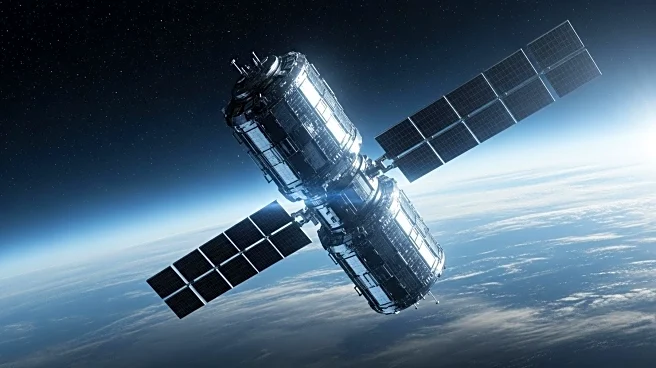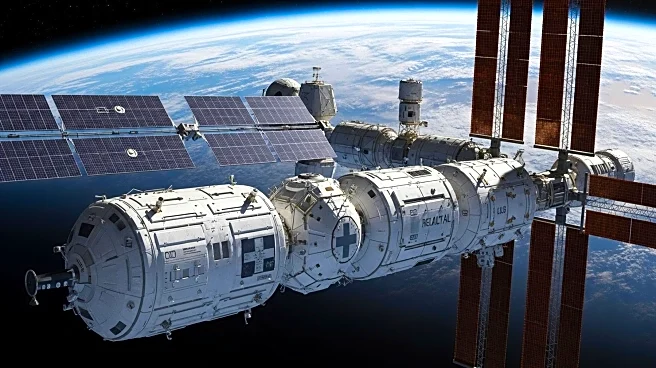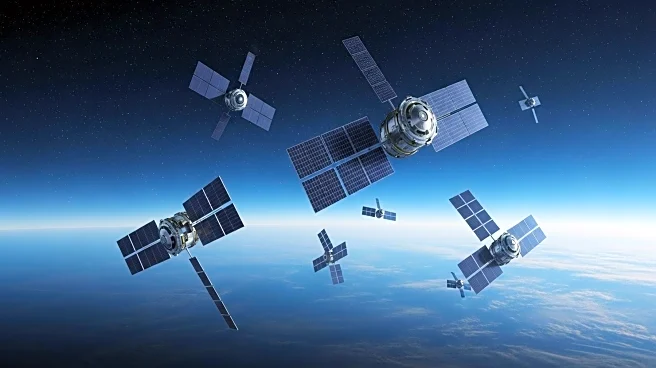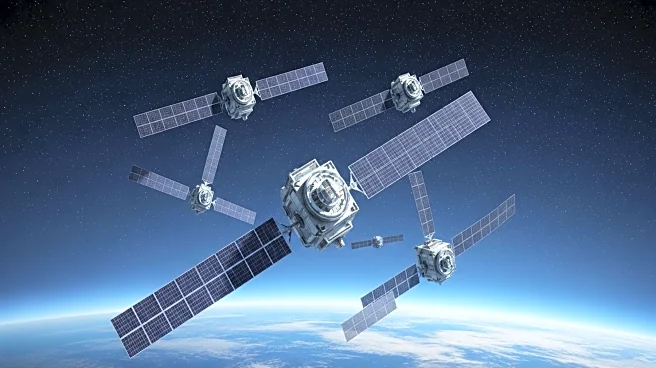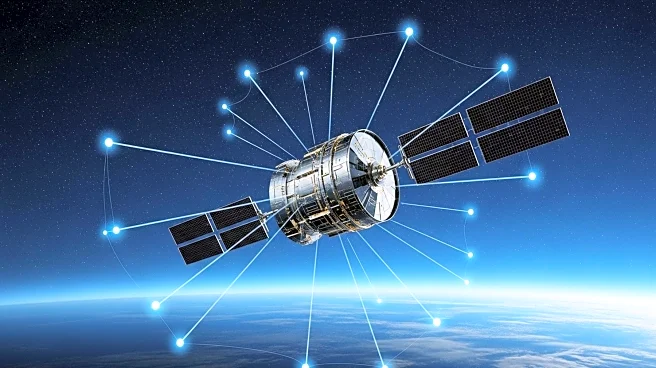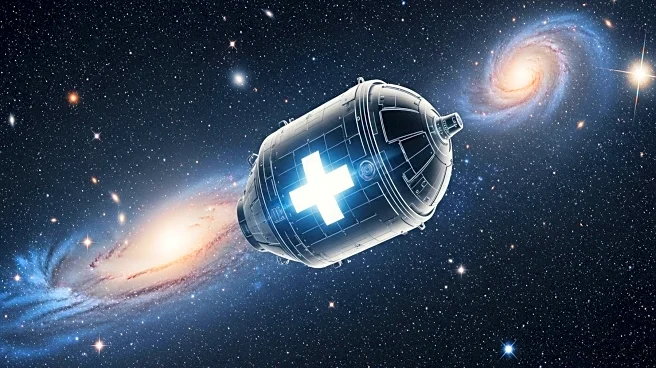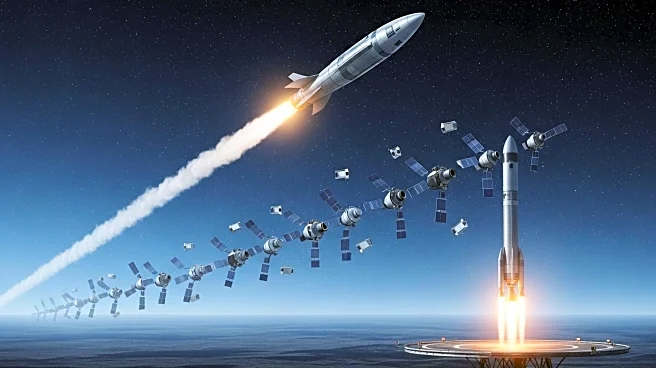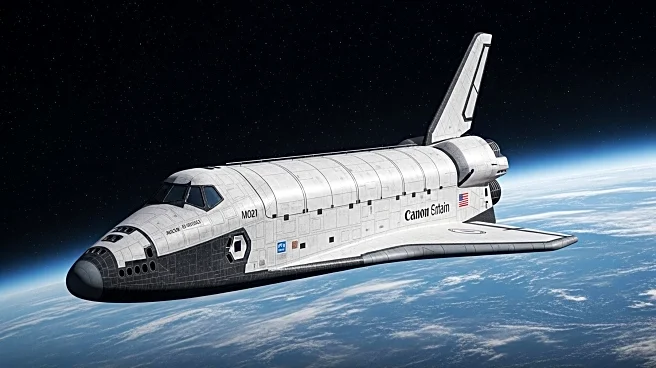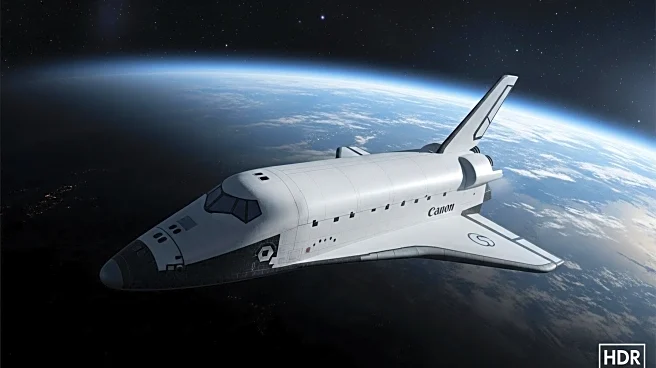What is the story about?
What's Happening?
SpaceX is set to launch 24 new Starlink broadband satellites on September 28, 2025, at 23:32 GMT. This launch will contribute to the expansion of SpaceX's satellite internet constellation. Observers can expect to see the 'Starlink train,' a line of bright points crossing the sky, in the nights following the launch. The satellites will be most visible shortly after sunset or before sunrise when sunlight still illuminates them. Additionally, the International Space Station (ISS) will make visible passes around twilight, providing opportunities for skywatchers to observe it as a bright moving point of light. Meanwhile, the space weather forecast indicates quiet conditions, with no major geomagnetic storms expected. The planetary Kp index is predicted to remain below the storm threshold, and auroras will be confined to very high latitudes unless an unexpected disturbance occurs.
Why It's Important?
The launch of additional Starlink satellites is significant for the ongoing development of global satellite internet coverage, which aims to provide high-speed internet access to remote and underserved areas. This expansion could have substantial implications for global connectivity and the telecommunications industry. The quiet space weather conditions are crucial for ensuring the stability of satellite operations and minimizing disruptions to radio communications and GPS systems. The absence of major geomagnetic storms and solar flares means that both satellite operators and users can expect normal conditions, reducing the risk of service interruptions.
What's Next?
Following the launch, observers can track the Starlink satellite train using apps or websites like FindStarlink for precise predictions from their location. The ISS will continue to make visible passes, and skywatchers are encouraged to check NASA's Spot the Station for timetables of upcoming passes. SpaceX's Starlink project will likely continue to expand, with more launches planned to increase the constellation's coverage and capacity. The space weather forecast will be monitored for any changes that could affect satellite operations or visibility.
Beyond the Headlines
The expansion of satellite internet services like Starlink raises questions about the long-term impact on the night sky and astronomical observations. The visibility of satellite trains can interfere with stargazing and scientific research, prompting discussions about the balance between technological advancement and preserving the natural night sky. Additionally, the quiet space weather conditions highlight the importance of monitoring solar activity and geomagnetic conditions to protect both terrestrial and space-based technologies.
AI Generated Content
Do you find this article useful?
